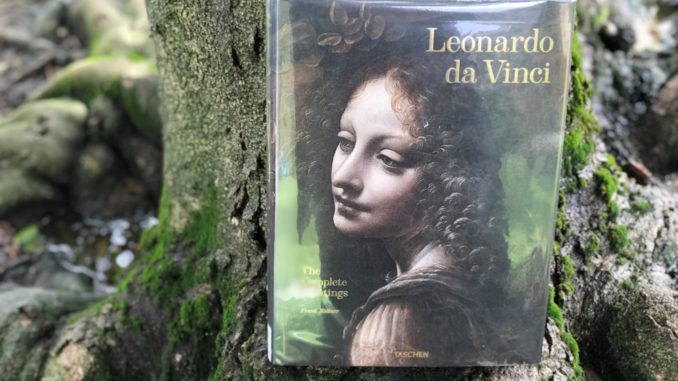
Not a biography of the artist but of his body of work. An update to the 2003 edition, this impressive collection includes the latest find Salvator Mundi that is disputably Leonardo’s signature sfumato technique; an illusion that blurs lines, light, and focus.
Dr Zöllner is an art Professor at the University of Leipzig whose postdoctoral thesis was on motion and expression in Leonardo’s art. Through ten chapters, he takes us on an intimate tour of Leonardo’s work from 1452 to his death in 1519.
It feels a walk through a museum as he shows us close ups of paintings so we can appreciate the details and brush strokes. He tells us what was happening in society at the time, and in Leonardo’s personal life, when the painting or drawing was created.
At the end of the book is a catalog of 34 works attributed to Leonardo, each with a brief description and discussion. A rare crash course in Renaissance art. Art lovers will relish the in-depth insights.
Leonardo was illegitimate which meant he was uneducated. But he showed a remarkable drawing skill at an early age. So Leonardo’s father urged his close friend, Andrea del Vercocchio, to teach Leonardo different branches of art and design. Thus, Leonardo began a career in painting. But it was “not considered a liberal art and was frequently ranked lower than poetry.”
His unlettered status pushed Leonardo to self-study math and science. He wanted to apply the disciplines to art. Ever experimental, he measured the human body himself and revised the originally equidistant Vitruvian Man.
“Leonardo created what remains even today the definitive visual statement of the proportions of the human figure.”
Despite Leonardo’s lack of education, he is the epitome of a Renaissance Man. He left behind an impressive display of his talents in art, science, math, geometry, engineering, architecture, optics, and anatomy.
Leonardo proves that being learned is defined not by an institution, but by actual learning. He was constantly curious, observant, creative, and inventive—the marks of a productive genius.
“No other artist of his generation left behind such an extensive, authentic and at the same time innovative graphic oeuvre.”
